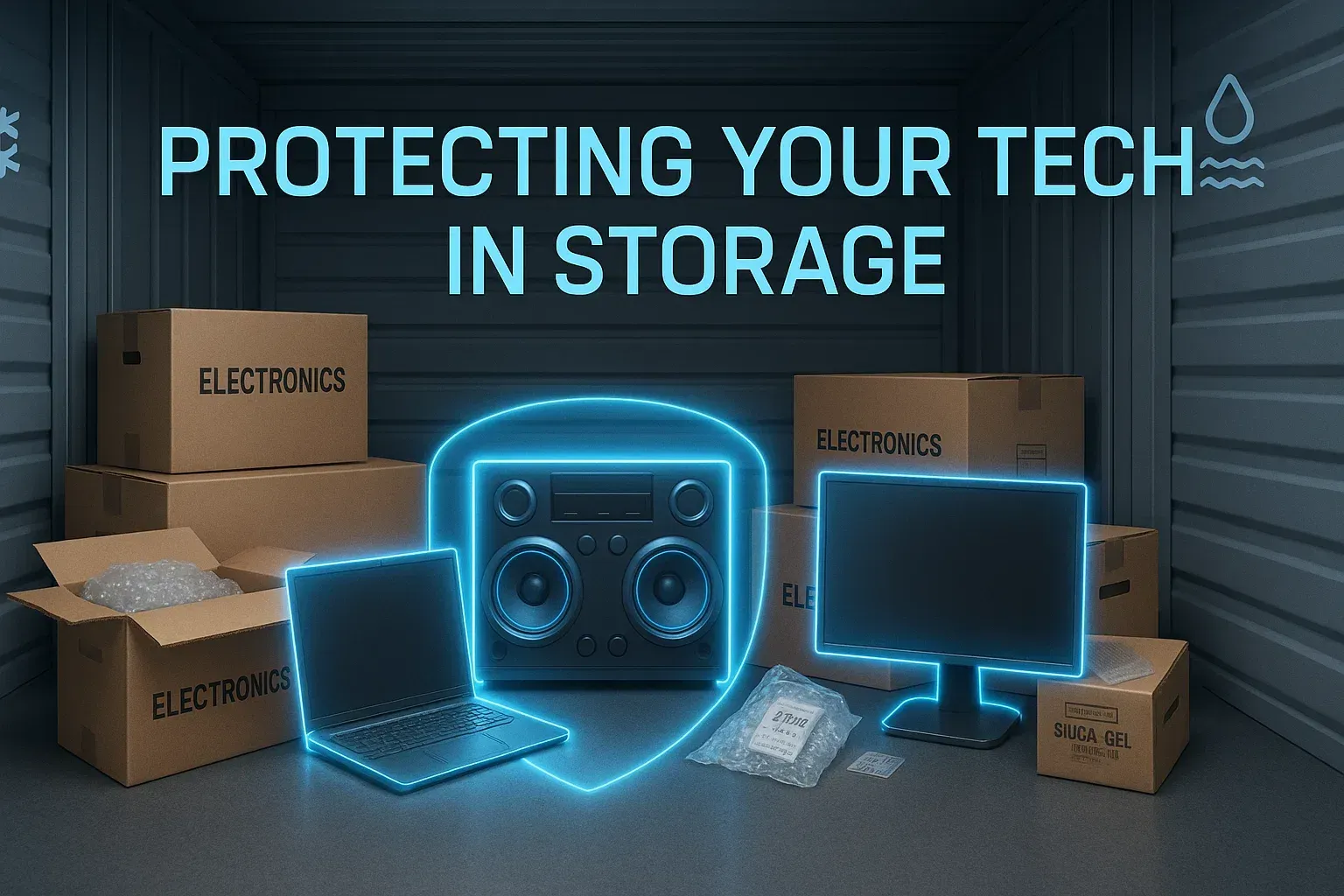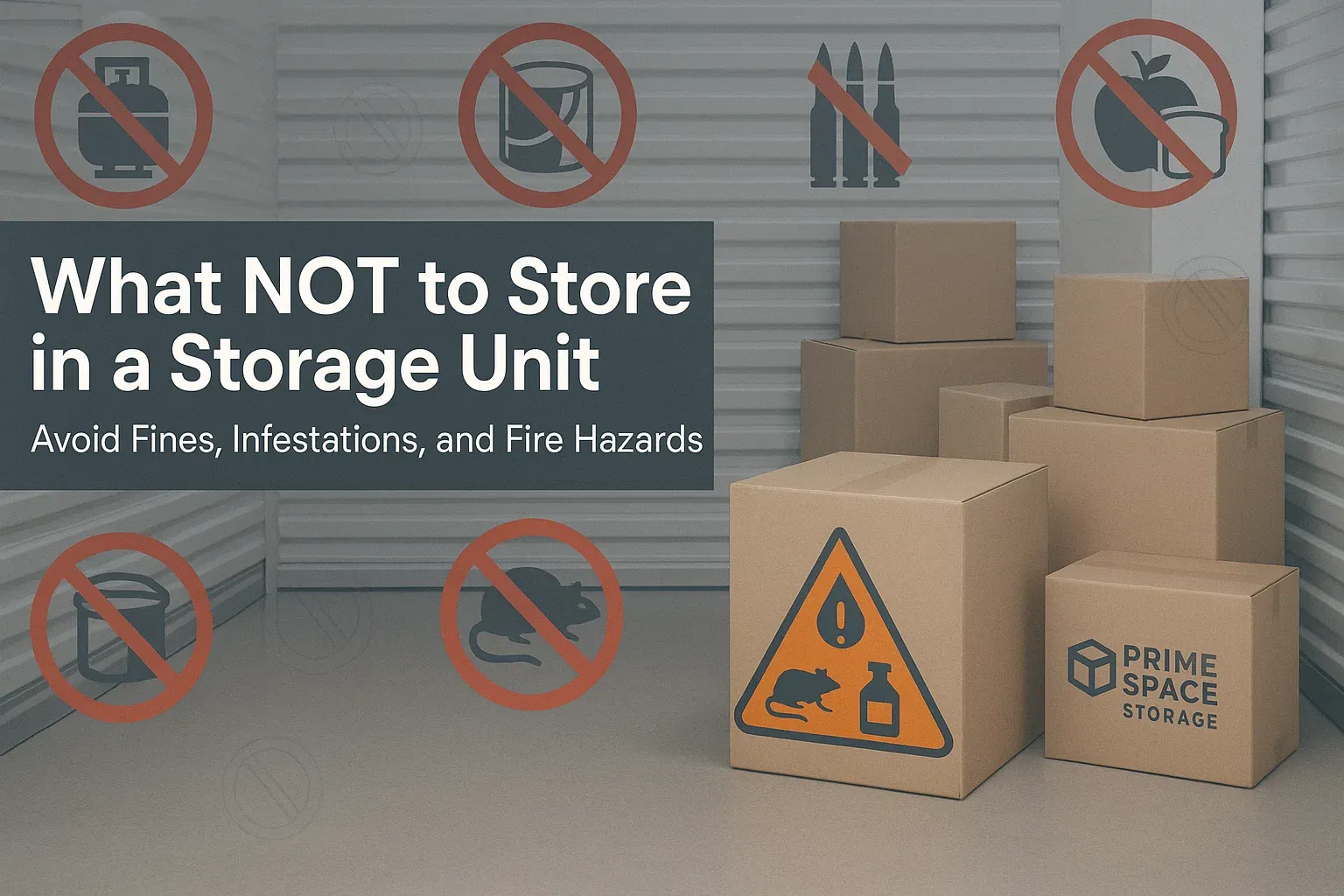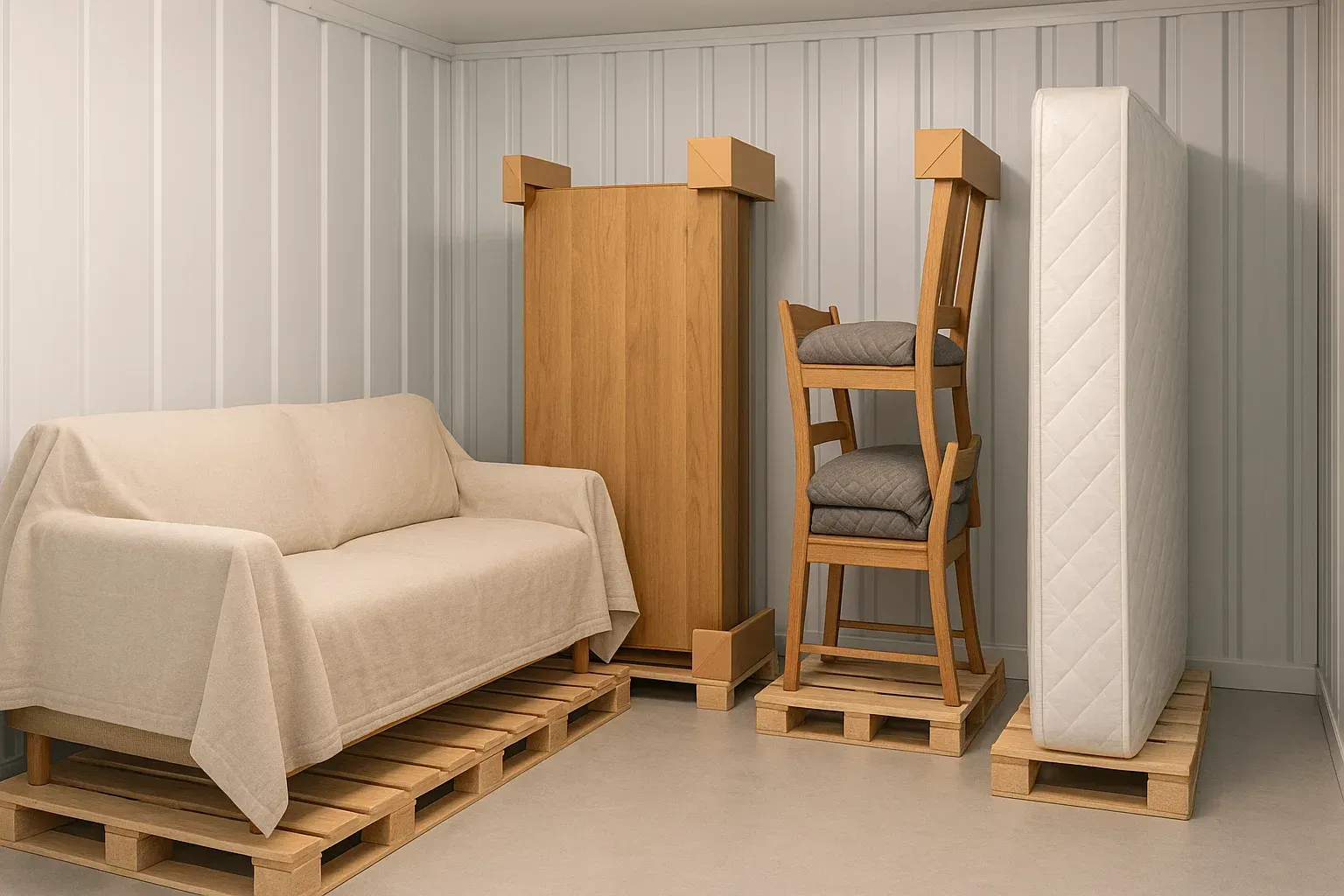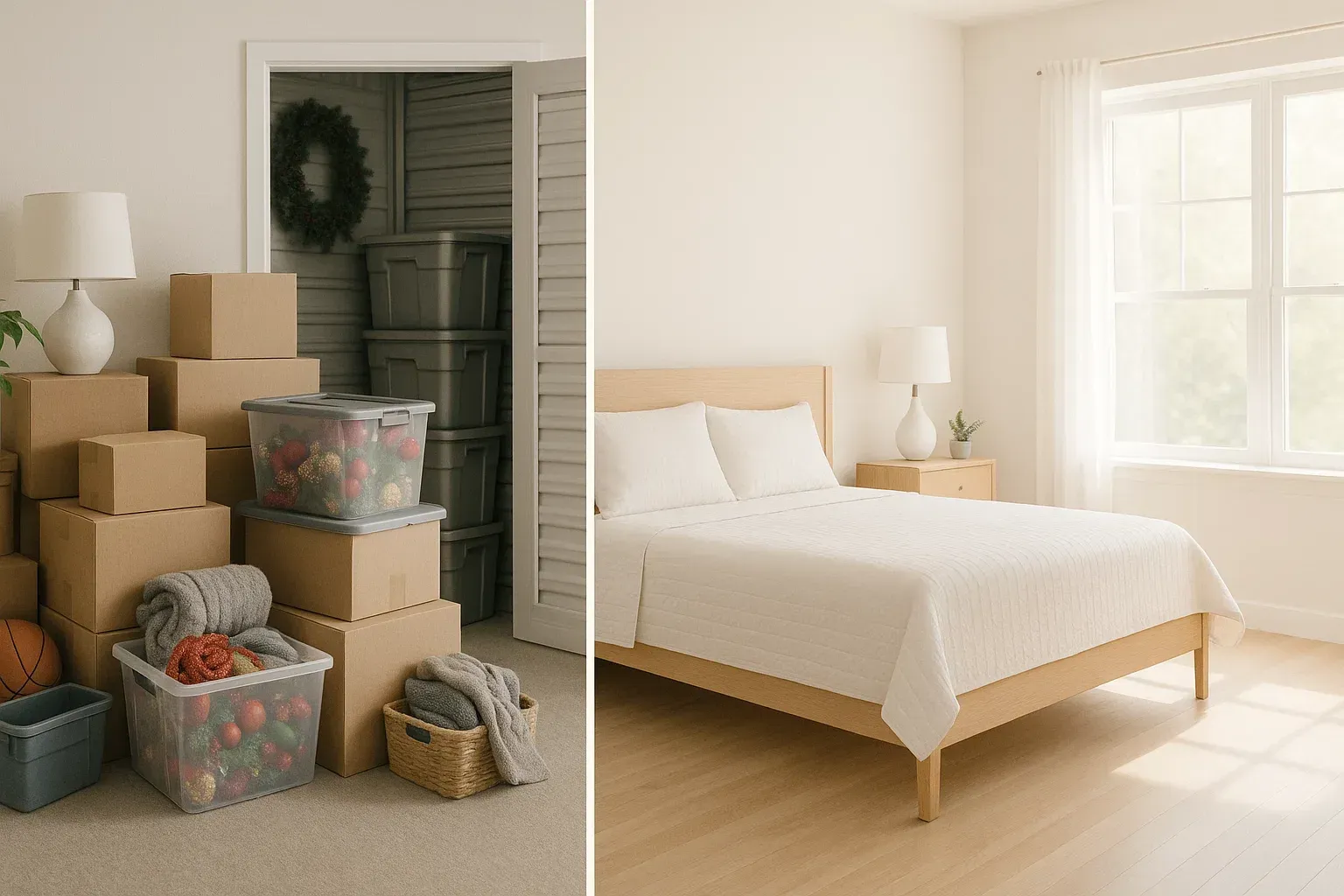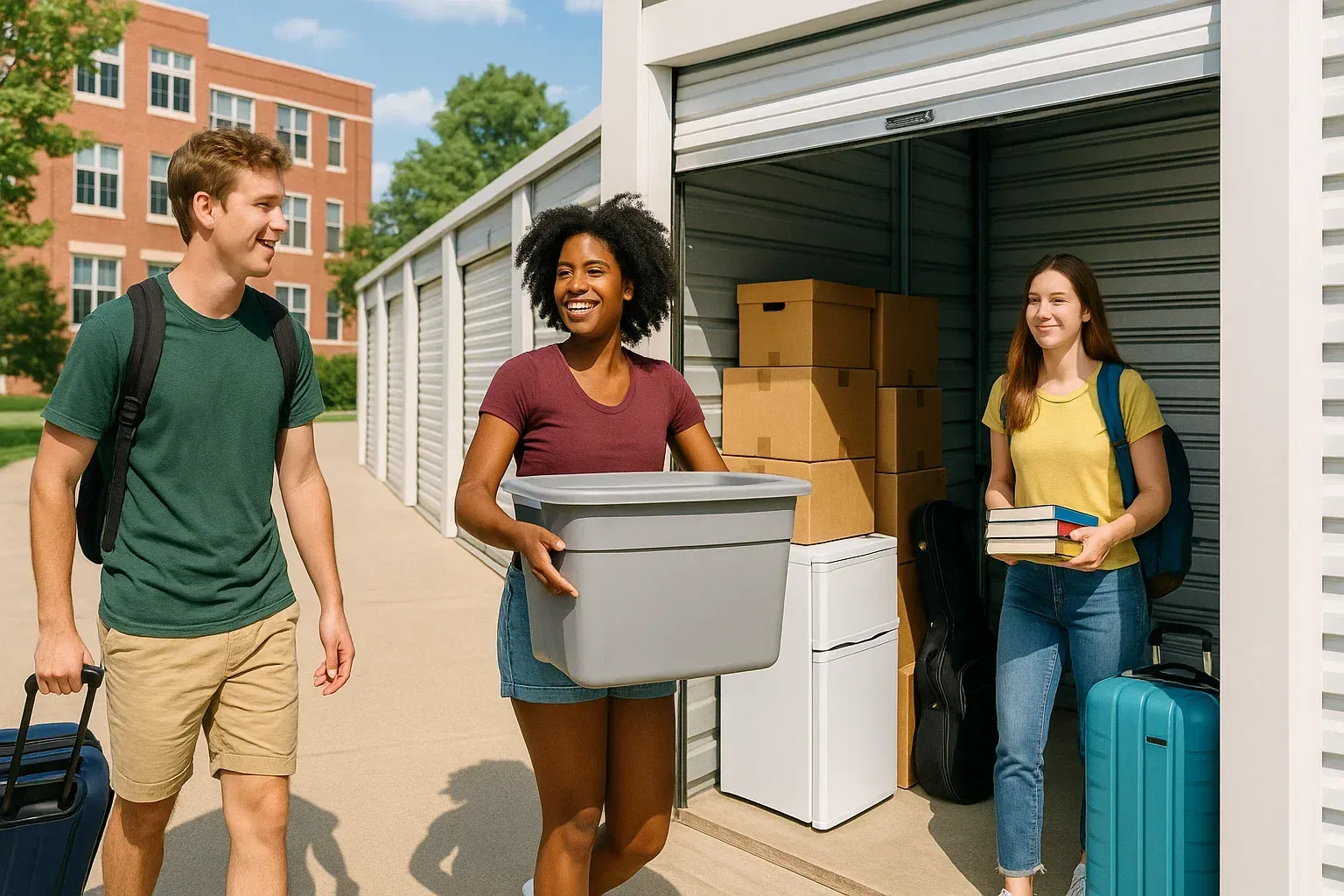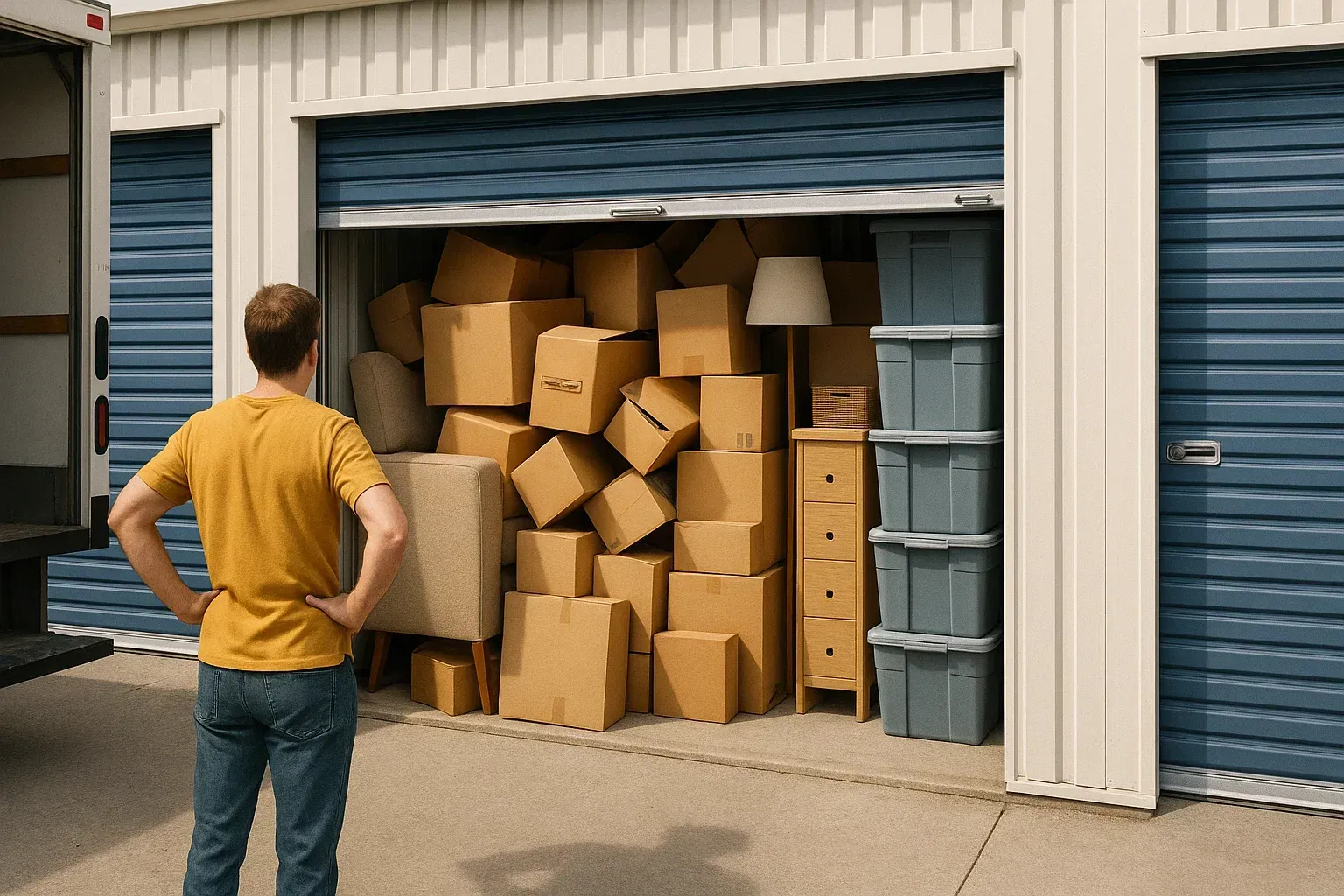What to Store in a Storage Unit
What to Store in a Storage Unit? (and How to Store Them Safely)
It starts with a corner. Maybe it’s the garage. Maybe the hall closet. You tell yourself you’ll deal with it later. But “later” stretches, and now things are stacked knee-high—boxes, furniture, stuff from a life you don’t use but aren’t ready to lose.
So you rent a unit. It feels like relief. A place to put things. A pause button. Maybe you're moving. Or maybe it’s the first quiet moment after a long stretch of noise. Either way, you’re not alone. Millions do the same every year.
But here’s the part that gets skipped: it’s not just about putting things somewhere else. If you don’t store things the right way, they break. They mold. They vanish. And the cost isn’t just money.
Let’s talk about what people put into storage. And how to do it right. These self storage tips will guide you on how to pack strategically, save space, and protect your belongings for future use.
Why People Use Self-Storage unit
Life shifts. People relocate. Kids grow. Closets shrink. Or maybe it’s just a rough patch and you need somewhere for the overflow. Whatever the reason, it’s rarely glamorous. Storage is more survival than lifestyle.
Over 50 million Americans use storage units. Not because they want to. Because it makes something slightly easier. The mistake? Rushing. Tossing in boxes without thinking. And then coming back to find mildew. Or shattered glass. Or a weird smell you can’t fix.
Planning helps. Even just a little. Labeling is crucial, especially when dealing with small items and cardboard boxes.
A Note on Climate Control
If you’re putting anything fragile or valuable into storage, consider a climate controlled unit. It’s not luxury. It’s just...safer. Especially when weather swings. It keeps heat and damp from eating away at your stuff and helps prevent warping, rust, and other damage to valuable items.
Yes, it costs more. But so does replacing things that didn’t make it. Climate controlled storage is essential for protecting sensitive belongings like electronics and important documents.
And the Labeling Thing
You won’t remember what’s in that box. You just won’t. Write it down. Use an app if you want. Or a Sharpie and masking tape. Either works. Just do it now, not later. Labeling ensures easy access to your items when needed.
1. Furniture
Couches. Tables. Beds. They’re big and annoying and don’t fit when your life is mid-transition. So into self storage they go.
Take them apart if you can. Wrap them with packing paper or blankets so they don’t get scraped up. Keep them off the floor—use pallets. If you skipped climate control, silica gel helps. But don’t try to move that couch alone. Just don’t. Bed frames and old furniture should be stored upright to save vertical space.
2. Clothes
Clothing that is not worn frequently, such as seasonal clothes and maternity items, can be stored in a unit to save space.
Winter coats. Summer dresses. Baby things you’re saving, just in case. Closet space is always too small.
Use vacuum bags. It saves space and blocks out dust. Natural pest repellents—cedar or lavender—smell better than mothballs. Hang delicate stuff in wardrobe boxes. If it's long-term, you’ll want climate controlled storage. Mold doesn’t care about your intentions.
3. Appliances
Fridge. Washer. Microwave. Things you don’t need now but will need soon. They take up space, but they’re expensive to replace. Old appliances, like unused ovens and dishwashers, can be stored safely in a unit until needed or sold.
Clean them. Really clean them. No crumbs, no old water. Wrap the cords. Use the original box if you’ve still got it. Keep them upright. Put them in the back of the unit. They’ll be there a while. Airtight containers can help protect smaller parts and attachments.
4. Antiques and Collectibles
Not always valuable. But always meaningful. China sets. Old coins. That wood clock your uncle gave you that still works. Valuable collections, such as stamps or art, should be stored to protect them from damage while keeping them accessible.
Wrap everything separately. Use bubble wrap, not newspaper. Store paper items in acid-free boxes. These hate moisture. Climate controlled storage facilities are a must here. Write “Fragile” in big letters. Then mean it. Consider using self storage facilities with extra layers of protection.
5. Sports Gear
Bikes. Skis. Golf clubs. The stuff of seasonal hope. Great to have. Terrible to store.
Clean it. Dry it. Oil the metal parts so they don’t rust. Hang the bike on the wall if you can. Ski bags exist—use them. It’s better than guessing what that smell is in six months. Store items like helmets or smaller gear in airtight containers.
6. Baby Stuff
Cribs. High chairs. Toys they’ve outgrown but you haven’t.
Take them apart. Wash anything with fabric. Don’t stack heavy boxes on soft things. Put toys in sealed bins. Not because of dust. Because you’ll want them clean when you pull them out again. Labeling bins helps for quick grab access later.
7. Electronics
Old TVs. Extra monitors. Cables you don’t recognize but might need someday.
Take out the batteries. They leak. Wrap everything in anti-static material. Keep them in the original box if it’s around. If not, use foam padding. Don’t skip the climate controlled unit. And yeah, back up your hard drive. Just in case. These storage tips are crucial for electronics.
8. Documents
Paperwork such as tax returns, medical bills, and receipts should be stored in a storage unit to declutter your home.
Use plastic bins that are waterproof and fireproof. Organize by type, not year—it’s easier that way. Back up whatever you can digitally. Keep the bins up high. Floods happen. Important documents are safer in climate controlled self storage.
9. Tools
Drills. Hoses. Wrenches. They’re useful, but not when you have nowhere to put them.
Wipe them down. Oil anything that moves. Use a pegboard or toolbox. Hang large tools if possible. And lock your unit. Thieves love tools. These are high value items worth storing with care.
10. Art and Holiday Decor
Holiday decorations are suitable for storage units since they are only accessed once a year. Paintings. Sculptures. Decorations you’ll need again—but not right now.
Wrap art in acid-free material. Don’t stack. Store flat or in crates. Humidity warps canvases. As for lights, just wind them up. You’ll thank yourself later. Consider climate controlled storage for family heirlooms and holiday items.
Some Final Notes
Choose a place with cameras. And gates. And lights that stay on at night. These features are common in reputable storage facilities.
Use sturdy cardboard boxes. Not the free ones from the grocery store. Fill the empty space with towels or paper. Visit the unit now and then. Even just to make sure the lock still works.
Insurance exists for a reason. You can say no. But know what you’re saying no to.
And that’s it. No secrets. Just habits. Quiet, ordinary ones. The kind that keep your stuff safe while life keeps moving. For more self storage tips, check with your local self storage facility or provider. They'll help you understand what to store in a storage unit and how to keep it in good condition.
